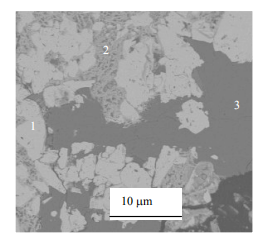Direct Briquetting with Rhombus Iron Ore(1)
In recent years, researchers in our country have done a lot of research on the utilization of complex refractory low-grade iron ore, from which it is found that direct reduction roasting-magnetic separation method is one of the effective ways to treat low-grade iron ore. Most of the raw materials used for direct reduction are high-grade ores or high-quality iron concentrates obtained after beneficiation, and the reduced iron products obtained after direct reduction do not need grinding and magnetic separation. The diameter reduction is carried out with raw ore. Although the iron oxide in iron ore is also reduced to metallic iron, due to the low grade of the raw ore and the low iron content after reduction, it cannot be directly used as a product, and high-grade direct reduced iron can only be obtained through grinding and magnetic separation.
Although some progress has been made in the research of direct reduction roasting of low-grade refractory iron ore in recent years, the ores used are all fine ores crushed to a certain particle size. There are many problems in the industrial application of direct reduction of fine ore, such as affecting the air permeability of the material layer, deteriorating the furnace environment, slowing down the reduction speed, difficult transportation, etc.
To some extent, it affects the application of low-grade direct reduction. Direct reduction roasting of low-grade iron ore powder after ball pressing can solve various problems existing in direct roasting. More choices for equipment workers used in industrialization of direct reduction roasting of low-grade raw ores.
There are many differences between direct pellet pressing after crushing iron ore and high-grade iron concentrate briquetting, such as coarse particle size of iron ore, high gangue mineral content in iron ore and complex mineral types. These factors will affect pellet forming property and may also have different effects on direct reduction roasting process from fine ore direct reduction roasting.
1. Experiment


Fig: Electron microscope photograph and energy spectra of raw ore
1.1 Experimental raw materials
1.1. 1 Iron ore
The ore sample used is summerite, with low iron grade of 33.75%, high SiO2 content of 17.58%, and low harmful impurity content. From the scanning electron microscope, it can be seen that the main minerals are light white siderite and black Shi Ying. The target mineral of the ore is siderite, which contains isomorphic elements magnesium and manganese, and gangue minerals are mainly Shi Ying, chlorite, etc. Siderite is mixed with gangue minerals in the form of banded dissemination. Siderite grains are fine and the particle size is about tens of microns.
1.1. 2 Reducing agent
The reducing agent used in the experiment is Hami coal, and the particle size is crushed to less than 2mm for later use. Industrial analysis results of coal samples show that the fixed carbon content is 63.24%, volatile matter is 26.85%, and ash content is 9.9%. The coal has high fixed carbon, low ash content and high volatile content, and is a better reducing agent.
1.1. 3 Binder
The stepless binder is bentonite, the main component of bentonite is montmorillonite, and contains a certain amount of other clay minerals and non-clay minerals. Organic binder is made of cellulose-based natural polymer through chemical reaction. Its main part is long-chain molecules containing a large number of hydroxyl and carboxyl groups, which are chemically pure.
1.2 Test method
Firstly, the raw ore is crushed to a particle size less than 2mm by jaw crusher and counter roller crusher. Weigh a certain amount of raw ore, reducing agent coal and binder, mix them evenly, add a certain amount of water, stir them evenly, then put them into a mold, place them on a digital display hydraulic pressure testing machine to press the ball, slowly apply pressure, and after reaching a certain pressure, keep the pressure for 30s and then relieve the pressure. The falling strength of the pressed wet ball and the dry ball was measured respectively, and the direct reduction roasting magnetic separation experiment was carried out after falling 4 times at a height of 0.5 m without breaking. The wet balls were put into an oven at 100 ℃ and dried for 5h.
The small balls reaching the strength are put into a capped graphite crucible, a certain amount of external coal blending is evenly covered on the surface of the small balls, and are placed in a muffle furnace for reduction roasting. The naturally cooled ore balls after reduction roasting are collectively called roasting balls. The roasting ball is undergoing experiments on grinding and magnetic separation conditions. The iron grade in the final product obtained by direct reduction roasting magnetic separation is more than 90%. In order to avoid confusion with conventional iron concentrate, we call this product reduced iron product here.




